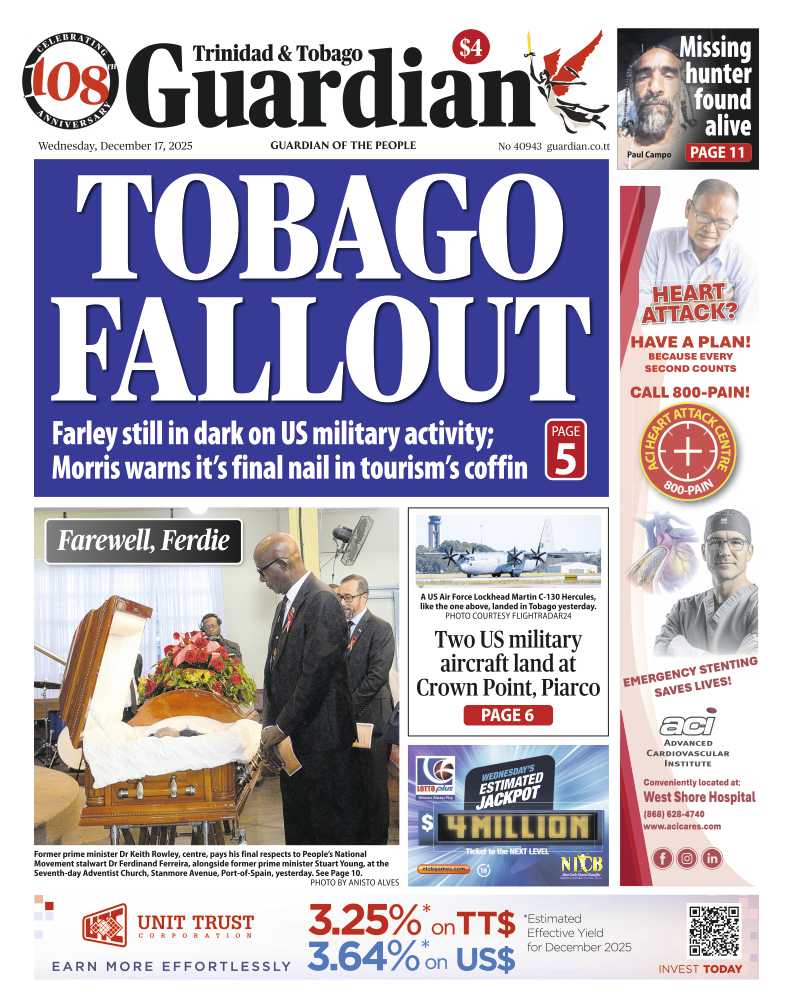The Race Monster: Pt 5
The change after the 1956 election was rapid and frightening. The poisonous, generations-long sense of entitlement nursed by the black upper class, and fed to the underclass, once in proximity to power, ignited. The Guardian's editorial of September 16, 1956, observed that Dr Williams's campaign was "rousing an evil temper in the masses." On September 26, 1956, the TG reported an arson attempt on Albert Gomes's house, and that one of his children was "attacked" in the streets. A relative of Gomes told me the house and family were regularly attacked by PNM supporters with garbage, dead animals, and stones.Victory did not bring peace. On July 21, 1957, ME Farquhar wrote in the TG: "The general feeling is one of apprehension... The colony is in a state of unhealthy ferment." On March 13, 1958, the editorial reported that civil service employees were spying on their superiors for the government.
It worsened in 1958, after the "hostile and recalcitrant" speech. By 1961, there were open race-political clashes. The reality of PNM governance manifested in the police response to the Indians' reports of violence. In September 1956, a PDP motorcade in Chaguanas was attacked, ostensibly by PNM supporters, but PDP supporters were arrested.In 1961, the DLP reported finding fake ID cards, and evidence of voter-padding, but police did nothing. States of emergency were declared in Indian areas in 1961, which the DLP said were triggered by PNM violence, as the police did nothing. Similar incidents were reported in the DLP newspaper, The Statesman.
The assault was multi-pronged. The pre-1961 anti-European rhe-toric largely disappeared after independence, and "nationalism" was designed with Indians, not colonial culture, in mind. In 1957 the Division of Culture was formed to be a midwife for nationalistic culture (Carnival). Many academics have noted this, but Gordon Rohlehr's essay, "The Culture of Williams...", is most detailed: Independence national culture was designed to establish the "Creole" worldview as national.
This message was disseminated in ways large and small: from the TTT sign-on voice over "Trini-dad: Home of the steelband, calypso and limbo," to calypso tents. National media, festivals, state symbols, and pop culture excluded Indians. By the 1970s highly visible Afro-American pop culture provided a ready-made ethos, which the PNM appropriated. (Ironically, as African-Ame-ricans were being oppressed by Anglo-American bigotry in the US, Indians were facing PNM Afro-Creole bigotry in Trinidad. Like Goldstein in Orwell's 1984, Indians were easy scapegoats for the failure of the PNM in every sphere.)
The chaotic nature the country in the 1960s, and the ubiquity of PNM brutishness and suppression, have been forgotten. CLR James and others were hounded out of the country. Guerillas made war on the State. Hundreds of strikes and demonstrations in the 1960s were followed by repressive legislation (the Industrial Stabilisation Act) outlawing striking. Rohlehr's "History as Absurdity" details Williams's attacks on UWI. Academics (like Kari Levitt) had work permits cancelled when they angered the administration in the 1970s.
Dissent was also "exported" via post-independence migration. Afro and Indo left (250,000 between 1961 and 1990), including ambitious Afro-Trinidadians who were honest about what was unfolding. The vacuum they left sucked hostile small islanders into the black working class, and peasant Indians, who were unprepared for direct confrontation with Creole nationalism, into the Indo middle class. The Indians' coping strategy remained schizophrenia: one culture for home, one for the outside.
This is also where the Indians' hidden history returns to bite them. Bhadase Maraj had ceded DLP leadership to Dr Rudranath Capildeo to improve its election prospects. Capildeo was a malignant narcissist (aka a mad a--), and fragmented the already unstable Bhadase coalition. After this, some lower caste Indians supported the PNM because of their hatred of the Brahmin/caste oriented DLP. Anthropologist Morton Klass describes the oppression of lower castes by upper in his study of Felicity in the 1950s, and diversion of support to the PNM.
The large picture, however -ie, what "nationalism" really meant -was clear. It led to a culture of Indo animus-a deep mistrust of Creole society and its institutions. This anger has been interpreted as "Indian hatred for Trinidad"-a classic and particularly offensive PNM trope. In reality, Indo peasants love Trinidad the way trees love the earth, and have no need to "prove" it (as illegal immigrants seem compelled to, by bawling it out every five minutes). Many Indians despised (and still do) the PNM passionately for that, and it easily elides into racist resentment, since there is no forum (the "public sphere" is emphatically "Creole") where this can be refuted.
Despite the PNM's faint protests to the contrary, they understand this dynamic, and perpetuate it. Most Indians developed coping strategies to "get along," but a consequence of this resentment was a separatist movement: the Indian Review Committee's jaundiced fantasy of a partitioned Trinidad-"Indesh." Naturally, this position was held up by PNM nationalists, and the media, as evidence of "Indian racism," of which all Indians were guilty (because "an Indian is an Indian is an Indian"-Wayne Brown wrote that in the Independent (Nov 13, 1998). It is, of course, now taken as axiomatic).
Several works have sketched this post-independence dynamic: Naipaul's The Mimic Men, Walcott's What the Twilight Says, CLR James's Party Politics in the West Indies. But only mine (Breaking the News) has examined how and why it happened a second time.To be continued

